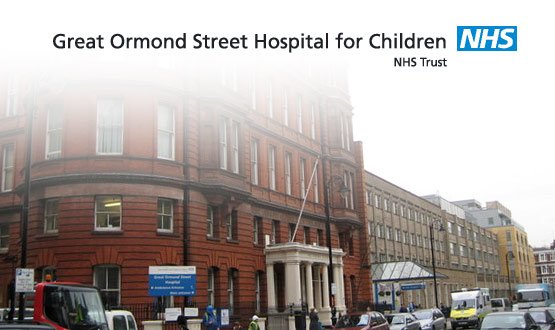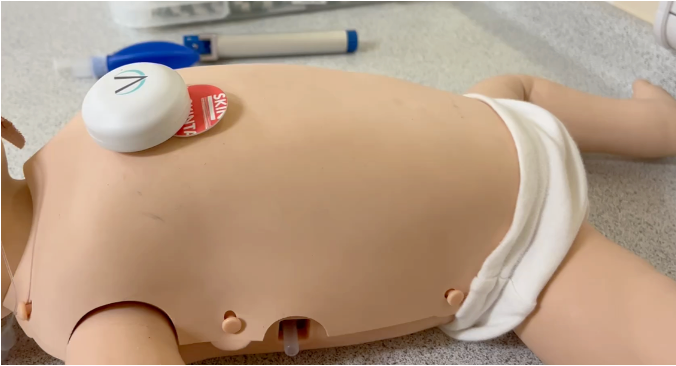Let’s get tracking
- 10 December 2010

“On my first day [in this job], we had a site-wide network outage that lasted two and a half days,” says Mark Large, the director of ICT at Great Ormond Street Hospital for Children NHS Trust.
“So at my first meeting with the trust’s chief finance officer, it wasn’t difficult to determine what my priority should be.”
The trust needed to overhaul its IT infrastructure, and the board decided to invest in doing that. Large says he was fortunate to have arrived a time when the organisation was ready to invest to improve.
The chief operating officer started within months of the ICT director, who took up his post just over two years ago. And together with the finance director and chief executive, he took a positive view of the need for more investment and a new structure to achieve some of the trust’s aims.
It gets worse…
After calling in consultancy firm Block Solutions to carry out an audit, however, it became clear that the problems were worse than first imagined and that any idea of a quick fix was not going to be possible.
“We’d been rolling out e-prescribing across the trust, which is obviously a very delicate and timely process in a children’s hospital, but the wireless coverage was patchy at best,” Large says.
“That meant something that was there to improve patient safety was actually becoming more of a problem.”
After raising his concerns, Large asked the chief executive to suspend the project for four months while a stabilisation plan was put in place.
Large says: “I received a very unusual response, which was ‘you’ve got six months instead, but get it done properly’.” He feels most executives would, instead, have tried to cut the time needed to get the project back on track.
“We knew this would be a huge undertaking, not only because our network was in a real mess, but because we wanted to invest heavily to make sure that we had lots of bandwidth so the system would be future proofed.”
Large set the specification around asset tracking. “If you can do asset tracking, you have enough coverage to do almost anything in terms of voice and data,” he contends.
But then it gets better…
Great Ormond Street decided to continue to use a Cisco based network, but in the process of the new design, decrease its network size from 350 to 185 switches and converge different network elements across the trust.
It also met Large’s original aim of having e-prescribing up and running again within four months.
Then, as staff gradually started to trust their IT systems again, Block Solutions and Cisco began a nine month network and WAN modernisation project, with a vision of using commoditised IT to create a network that ‘just works.’
The trust is also in the process of virtualising its servers and has installed a new storage area network from Net App as part of the commoditised IT vision.
“We are currently only using 12% capacity of the network, so we have continued to develop a strategy that would allow all sorts of innovation that would see IT become invisible to the user,” Large says. “That would mean we are doing our job properly.”
Large and his team are now moving to focus on mobility, to free clinicians from IT provision based on fixed locations and improving patient care.
“Five years ago, the idea of having one device for everything was only a vision. Making that a reality is really nirvana for our clinicians.”
The trust is keen to exploit new technology, such as iPads, and has already started trialing them for e-prescribing on Victoria ward, which specialises in renal medicine.
Only five devices are being used, but Large says that while he thinks his team has got security issues covered, it wants to address any architectural problems that arise before starting a wider roll-out.
He also wants to find out whether new devices generate more support calls. “Although we have an IT team of 60, most work in other areas with a limited number to provide technical support.
“The feedback so far has been great, for usability with some infrastructure issues to be resolved to make them work effectively with our Citrix deployment.
"Ultimately we don’t like telling clinicians that they have to use certain devices. We want them to self-select and have all devices supported.”
Get tracking
The amount of bandwidth being used will jump as the trust starts to make greater use of video, IP telephony and tracking over the coming months.
Video in theatres will gradually be connected to the newly video enabled network, allowing clinicians to get specialist advice direct to theatres from different locations.
The trust is also looking at how video conferencing system and telehealth systems can be used to allow patients to interact with relatives and carers staying at the patient hotel.
But Large is most excited about another pilot of AeroScout’s asset tracking system, which he claims is already showing benefits.
“We’ve seen so many benefits from using the system already. When we first switched it on, we tagged a TPN pump, left it and went for lunch.
“When we came back, the system said the pump was over the other side of the hospital in the nurses’ quarters. We thought it was broken. But we drilled down and there the pump was, hidden in the back of a cupboard.”
The trust initially thought the system would track objects to within ten metres, but it is getting as close as two metres; an invaluable resource for biomedical engineers who spend hours looking for equipment.
It also looking to start a pilot to tag its electronic patient records, of which 150 are lost or untraceable every week.
Large adds: “We’re looking at using the technology in different ways, such as using Frankie and Benny’s-style devices that bleep and vibrate when it is your turn to be seen. That would give patients the freedom to move around, rather than sitting in a waiting room.”
Steering clear of the national programme
The IT department at Great Ormond Street has been busy with big infrastructure changes, rather than preoccupied by the National Programme for IT in the NHS.
The trust is one of seven in London and the South that signed a deal before NPfIT to keep their iSoft patient administration systems; a contract that EHI understands is about to be renewed. GOSH is therefore on a different path.
Large says that the challenges around implementing an EPR differ to those faced by many other trusts: “There’s a lot of work going on to achieve a paperless environment, but it’s very difficult because we are a children’s hospital and we have to keep the paper records for an extremely long time.”
He adds that although the trust is looking to provide a single view of loosely coupled systems, he doesn’t really see the point of going ‘down the portal only road’ since this just adds another presentational layer.
“We are already using Sentillion’s context management, so that when we hover over a patient in the system and it will refresh and update the other key systems.
“In the next IT strategy, we’ll not only look at enhancing that but we’ll look at the importance of sharing data.
"At the moment, IT is separate from informatics, so we need to write a strategy that ties them together. We’ve got the infrastructure and the integration checked off, but there is always going to be more to do.”




